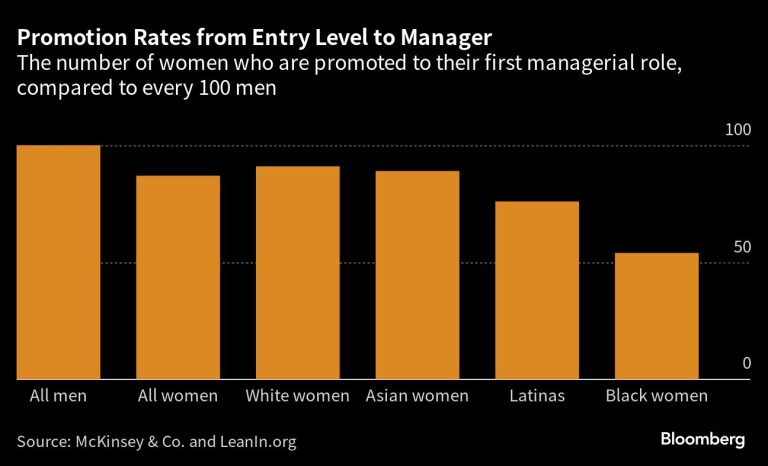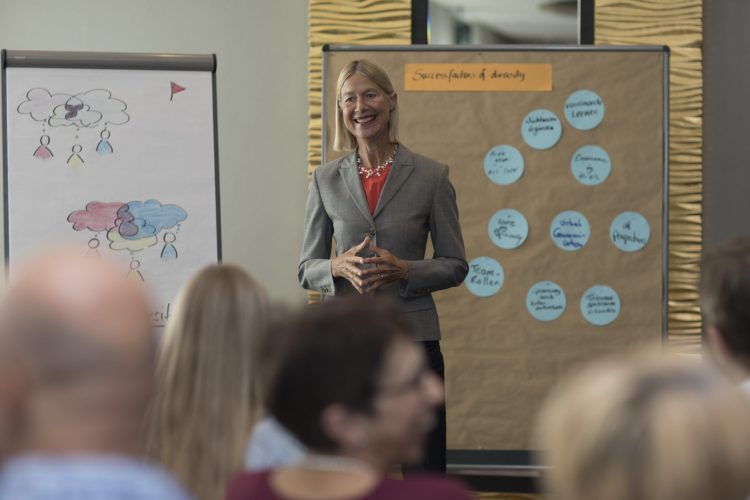What does the data and stories from real people tell us?
Jacqueline Williams is a senior facilitator with CLS. She was recently invited to be part of the facilitation team for the International Finance Corporation (IFC) event “Inclusive Leadership for Company Sustainability” for Training of Trainers. This took place over 4 days in Asia. This event was part of the IFC’s Women on Boards and in Business Leadership (WBBL) section’s mandate.
According to a recent report by McKinsey & Company, companies with diverse executive teams outperform on numerous levels and companies that exceed 30% representation of women are more likely to financially outperform their peers. The presence of diverse perspectives leads to better decision-making and innovation, as it allows for a broader range of ideas and solutions. Diversity is particularly beneficial in industries that rely on creativity and innovation to stay competitive.
Alicia Gonzalez, Forbes
A necessary approach to leadership?
It was a privilege for me to be part of the facilitation team at the ICF “Inclusive Leadership for Company Sustainability” training of trainers’ programme in Asia.
As I reflected on the richness of the interactions and informed sharing during our 4 days together, I asked myself what made this programme so special? The simple answer was: the use of stories and data, to illustrate key concepts and situate where we are now, and where we may wish to be, before we can truly say that we have a good leadership culture in our organisations.
There are several concepts which we considered during our facilitation. The Broken Rung, the Leaky Pipeline and of course the Glass Ceiling. I hear stories from both the women I coach and from colleagues working in the global leadership space. They talk of how the double whammy of gender and ethnicity is often a barrier for them. This is backed up by the research data on the Broken Rung.
While I was not at all surprised to hear real stories relating to the relatively new concept of the Broken Rung (I also have mine) it was a wakeup call to hear that the statistics are showing that the issue is still very real today.
The International Finance Corporation (IFC) was established in 1956. It is part of the World Bank Group. The IFC’s primary purpose is to improve the lives of people in developing countries, by investing in private sector growth.
The World Bank Group Gender Strategy recognises that gender equality is about fairness. Yet it is also good for business and the global economy.

"Growing evidence shows how removing gender barriers unlocks economic productivity, reduces poverty, deepens social cohesion, and enhances well-being and prosperity for current and future generations. Women’s participation and leadership improves the management of natural resources, strengthens resilience, and makes economies more competitive."
World Bank Group
The 2024–2030 Gender Strategy expresses the bold ambition to accelerate gender equality to end poverty on a livable planet. It proposes to engage differently, building on the lessons from the 2016–2023 Gender Strategy, and on feedback from a wide range of stakeholders.The new strategy prioritizes three strategic objectives: end gender-based violence and elevate human capital, expand and enable economic opportunities, and engage women as leaders.
World Bank Group Gender Strategy, 2024 -2030
Stories and data are key
The stories shared by both male and female participants at the session were powerful. The commitment by the men in the room was evident and their frustration with the situation came out strongly. The men shared stories to give positive and encouraging examples of how they have committed to being allies, in any and all situations where their voices can help to promote and progress change.
I would argue that one of the consequences of the broken rung for organisations is around strategic direction and actions. Both men and women feel frustrated and concerned that women’s voices cannot be fully heard because the number of women in the “room” is much lower than it should be. This has a negative impact on company strategy; the business cannot fully assess the challenges and opportunities which lie ahead, if they do not hear the voices from a representative range of people.
Interesting data is available in many sectors, from engineering and STEM professions to education and tech, to show this lack of representation as women try to progress their careers. The Leaky Pipe effect not only impacts women, it has a negative effect on the company’s bottom line. At a time when competition for global talent is rising, can any company truly afford to let talented people go? It could be time for business to realise that their competitive advantage may depend on the women they aren’t promoting .
Globally, women hold only 23.3 percent of board seats, 8.4 percent of board chair, 6 percent of CEO, and 17.6 percent of CFO positions1.
Companies with greater board gender diversity are 60 percent more likely to reduce the intensity of energy consumption, 39 percent more likely to reduce greenhouse gas emissions, and 46 percent more likely to reduce water use2.
1 Deloitte. 2023. “Women in the Boardroom: A Global Perspective.” Eigth edition.
2 FP Analytics. 2022. “Women as Levers of Change.”
I don’t have any easy answers to the questions we all face around developing an inclusive approach to leadership. The questions are being heard and it is up to all of us working in the people development and talent management sectors to keep asking the questions. The business case for more women leaders, particularly at senior level, has been made many times and it’s a strong business case. We need to keep raising it until boards truly understand that their strategic advantage depends on having a fully inclusive approach to developing and promoting leaders.
IBM’s culture of respecting and appreciating diversity is... a source of competitive advantage, especially with growing emerging markets and women and minorities representing a $1.3 trillion market. IBM’s diversity strategy is based on understanding its markets, which are diverse and multicultural. Aslan et al. (2020) suggest that inclusive leadership can improve job satisfaction by promoting work engagement, which is characterized by employees’ positive attitudes and behaviors toward their work. By deliberately seeking ways to reach a broader range of customers, IBM has seen significant bottom-line results.
Inclusive leadership for sustainable development in times of change
What is the Broken Rung?
The “broken rung” concept comes from a book of the same name, from three senior partners in McKinsey & Company. Essentially women are less likely to be promoted after being recruited than men in the same recruitment round. This disadvantage continues throughout a woman’s career, inevitably leading to fewer women in senior positions.
Inclusive leadership is especially important during times of change, as it can aid individuals and organizations in navigating uncertainty, cultivating resilience, and achieving long-term objectives.
Inclusive leadership for sustainable development in times of change

Jacqueline Williams

What is your story?
If you have a story to share with Jacqueline, please get in touch with her using the contact form on the “click here” button. She is interested in hearing from organizations and individuals about their experiences, in the context of an inclusive approach to leadership and its impact on business.
Jacqueline Williams is a senior facilitator and programme director in the CLS network. A qualified accountant and lawyer, she specialises in governance and leadership. Developing leaders – particularly women leaders – is a focused passion for her. Jacqueline is the programme director for one of our UNICEF leadership development programmes. You can view her full profile here.
Can we help?
Inclusive leadership is an important development area for every business. Whether you want to review the way you manage your talent pool, or step up the discussions on board level leadership, we can help. Click the button below to get in touch


